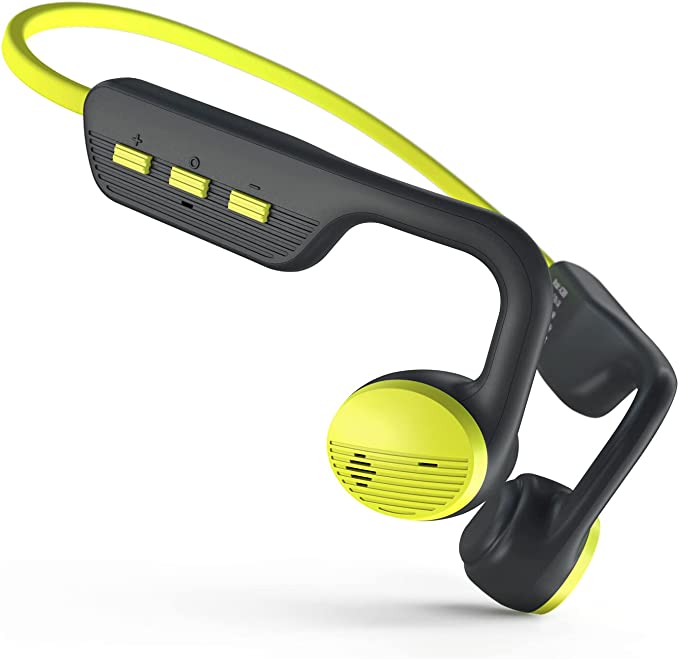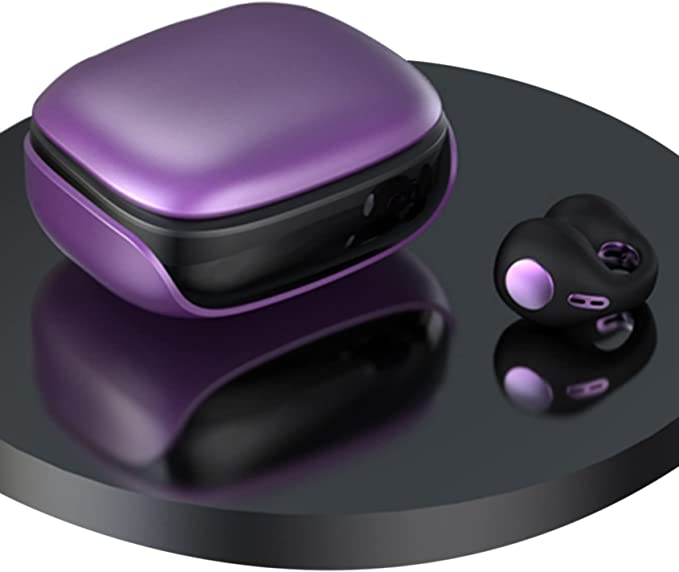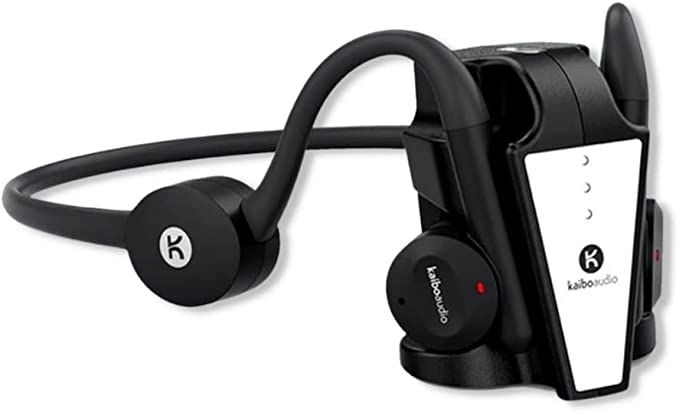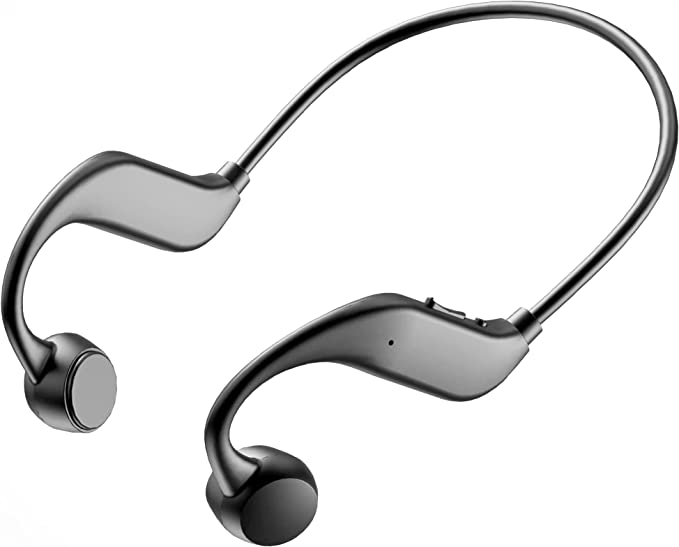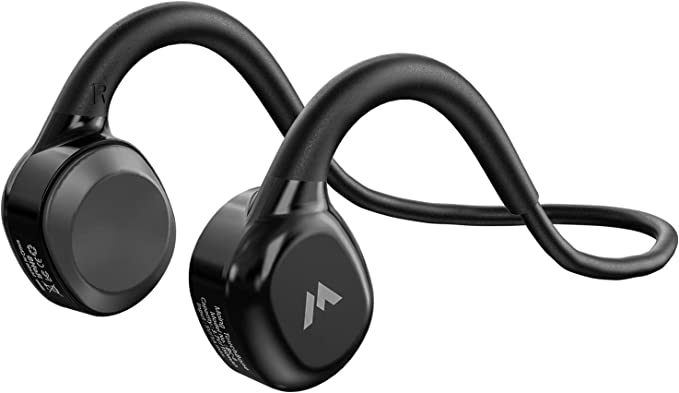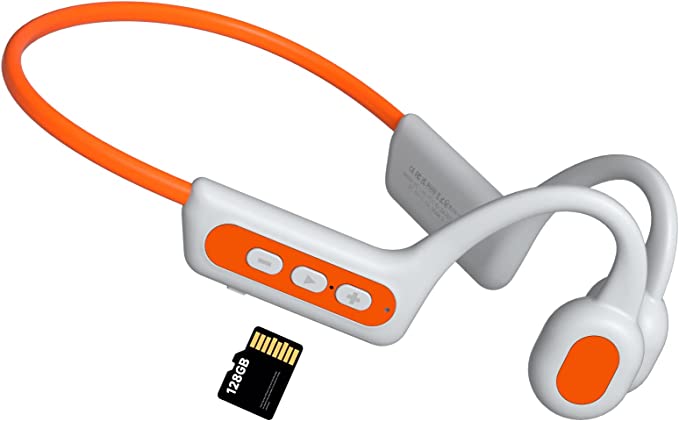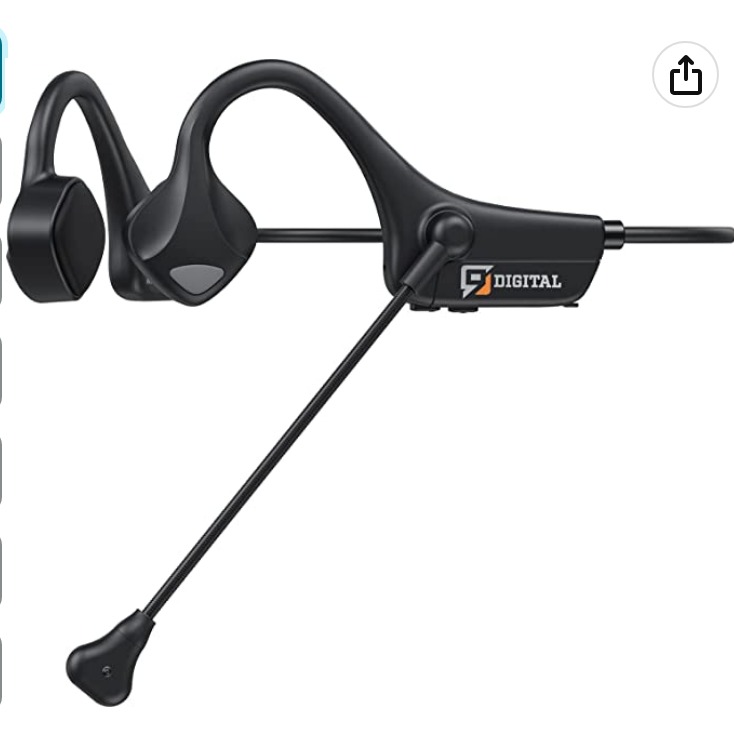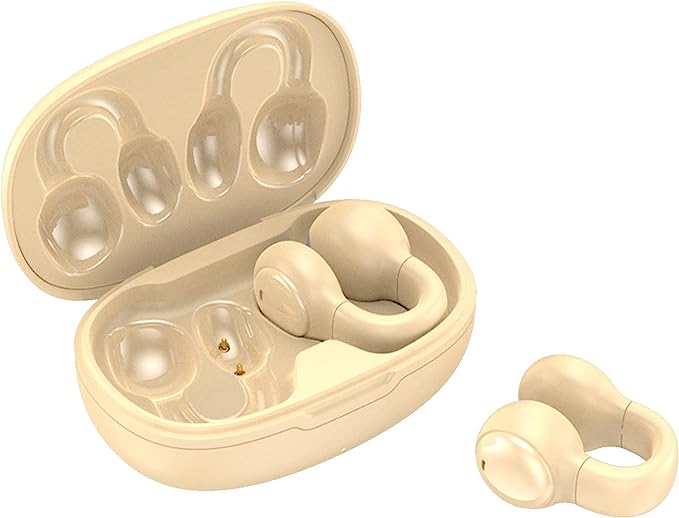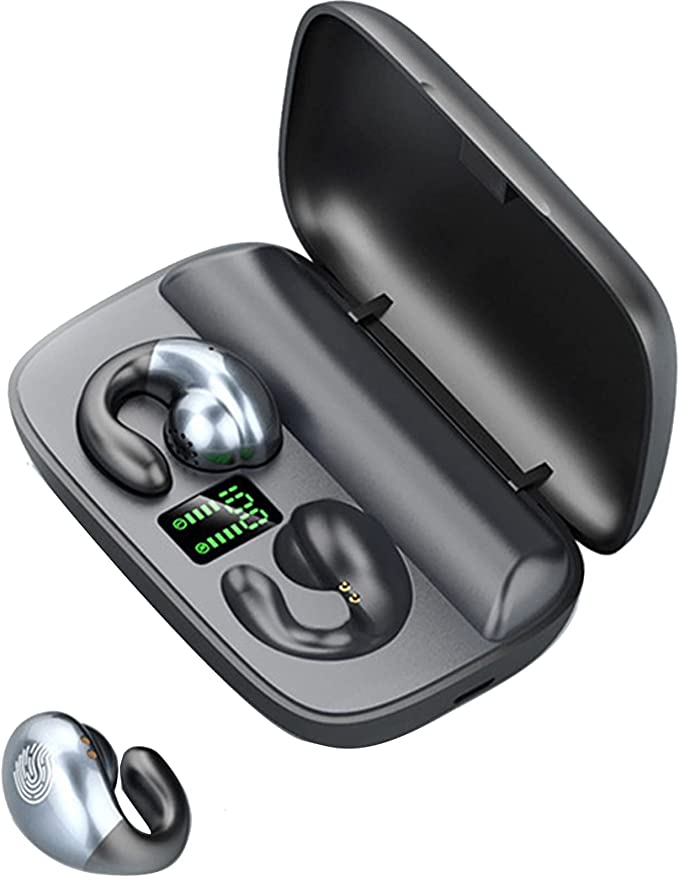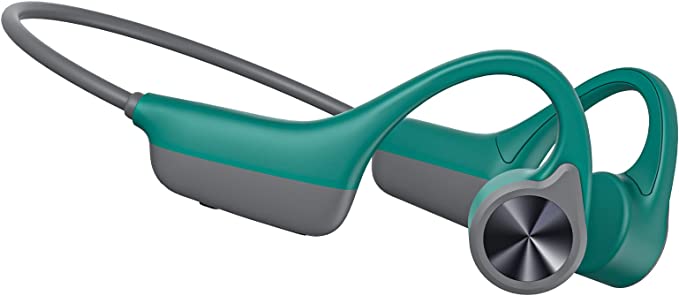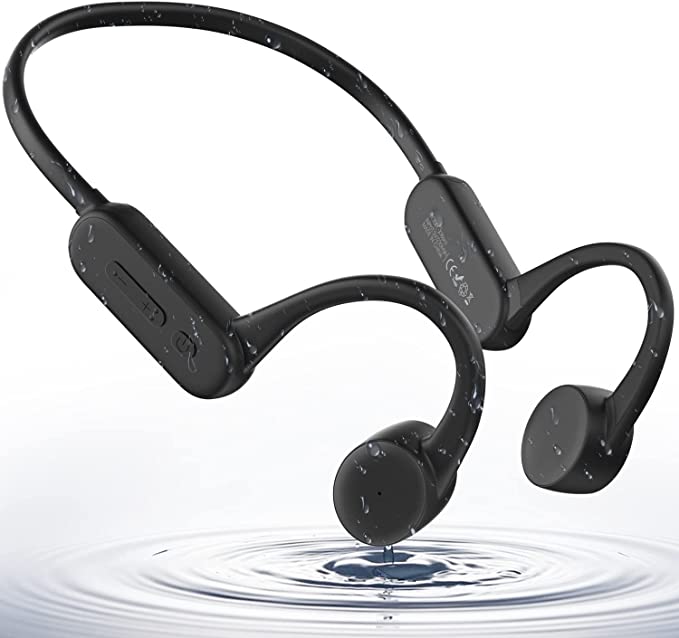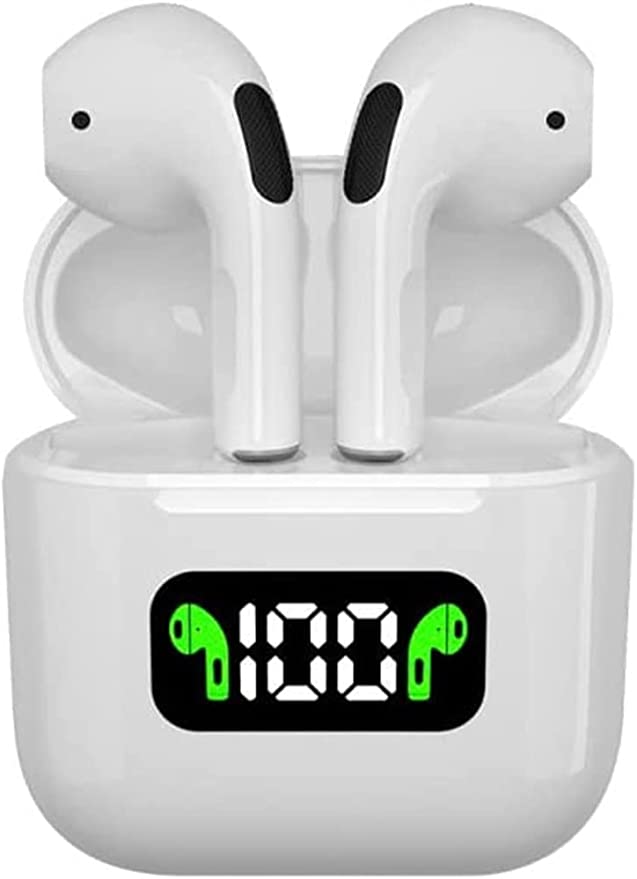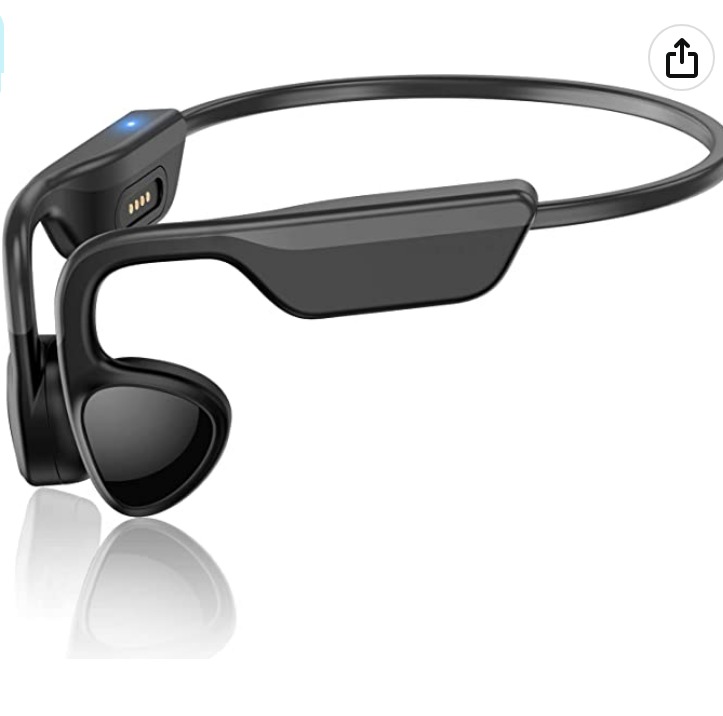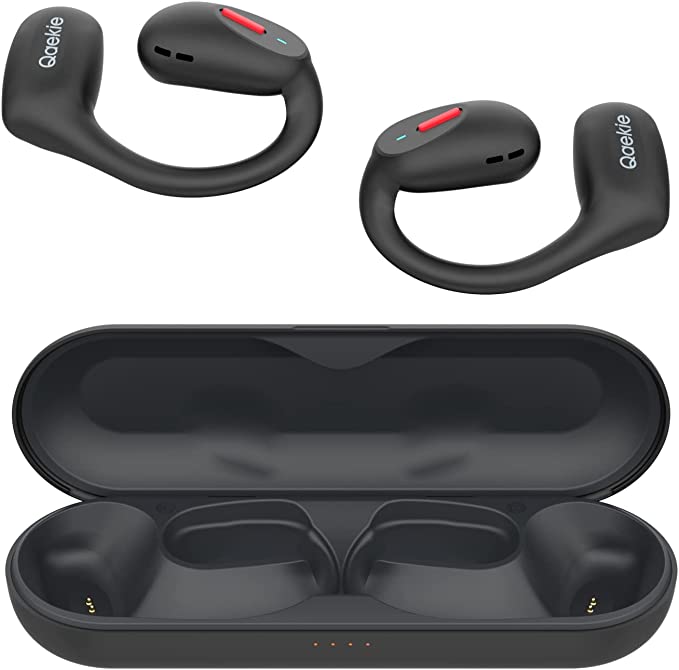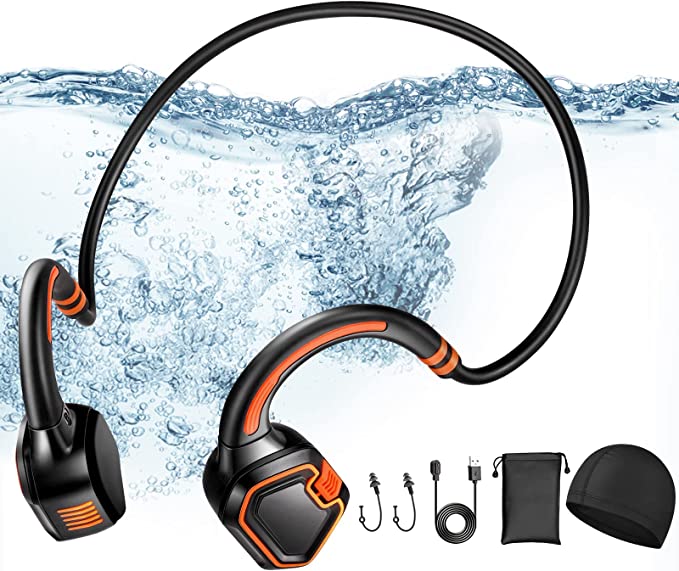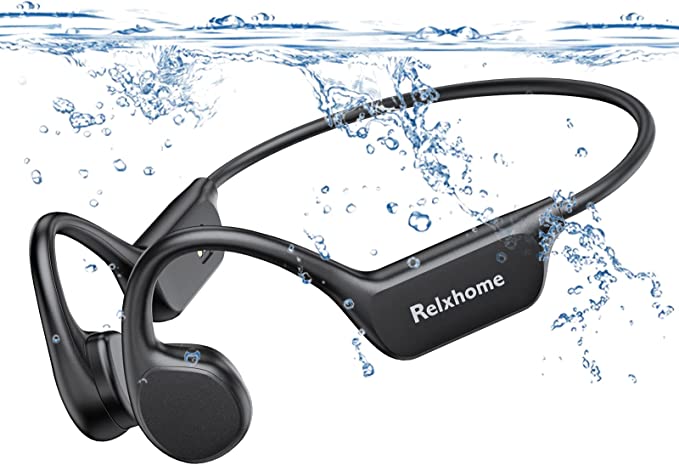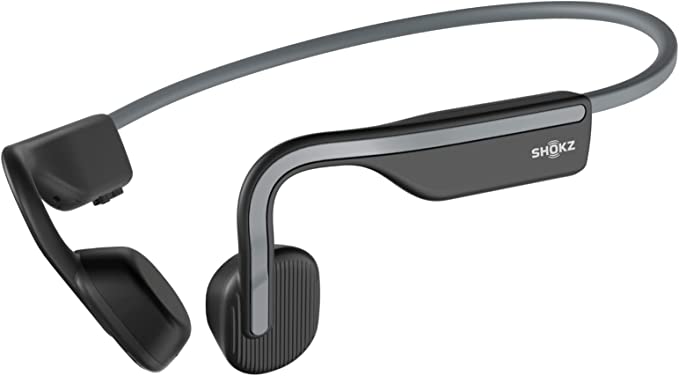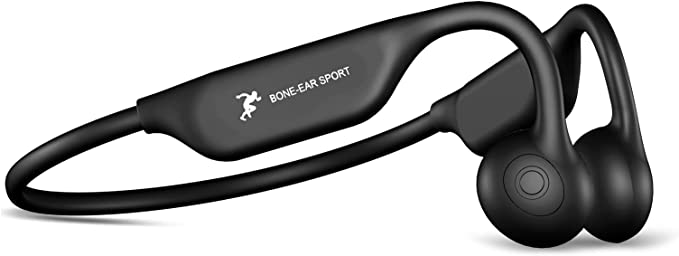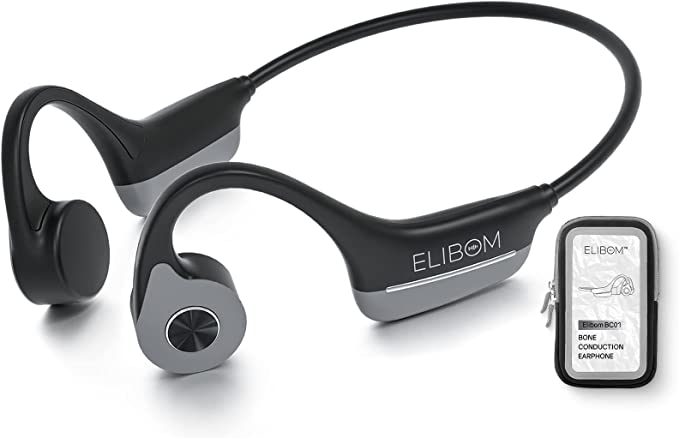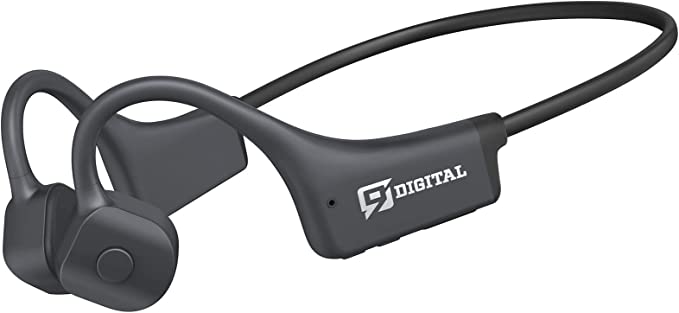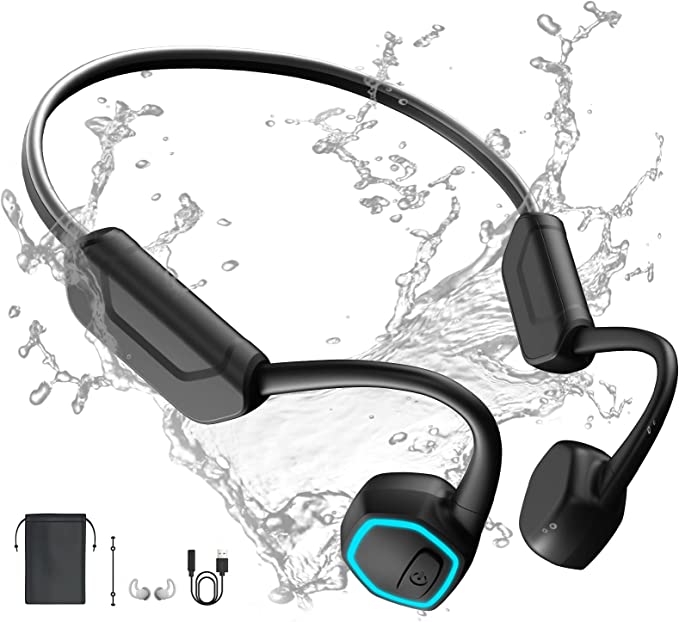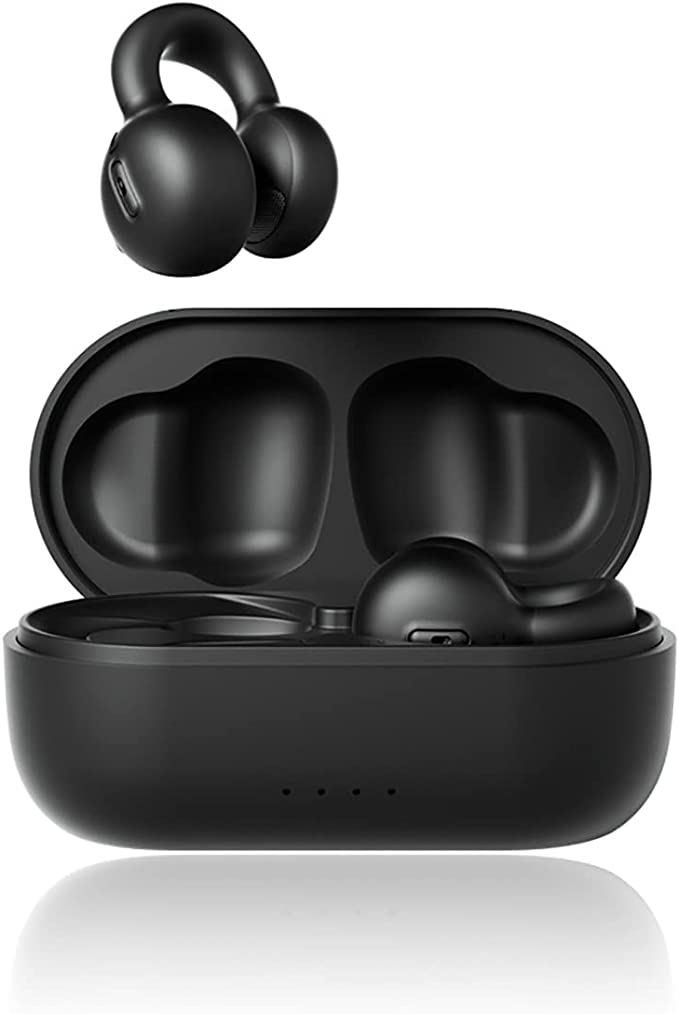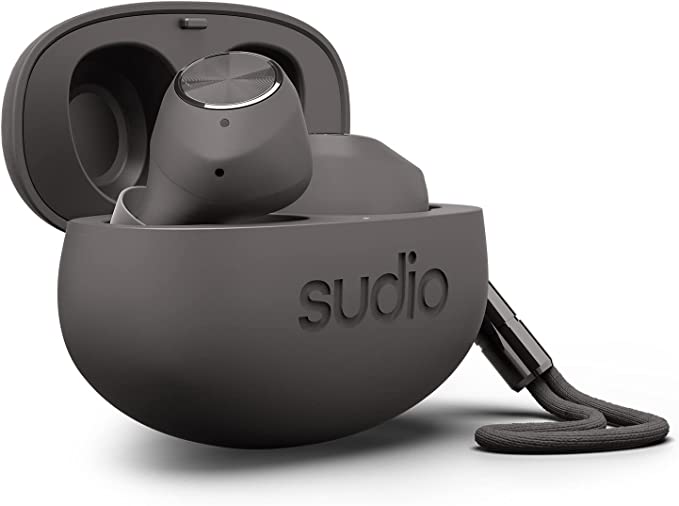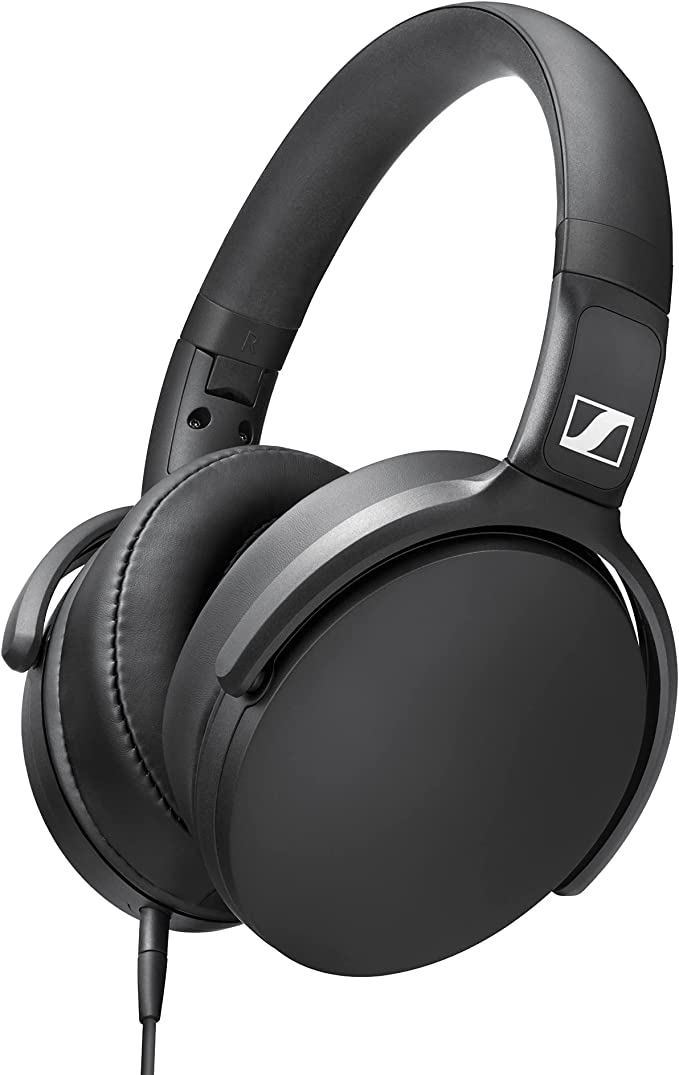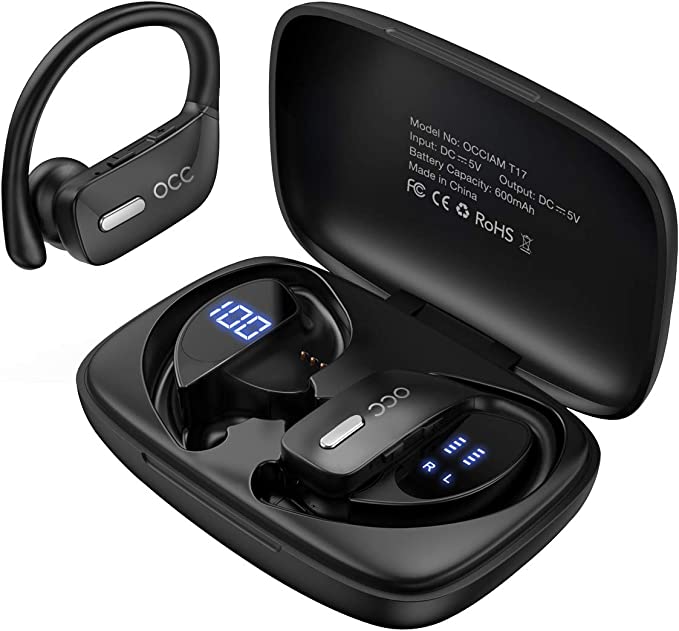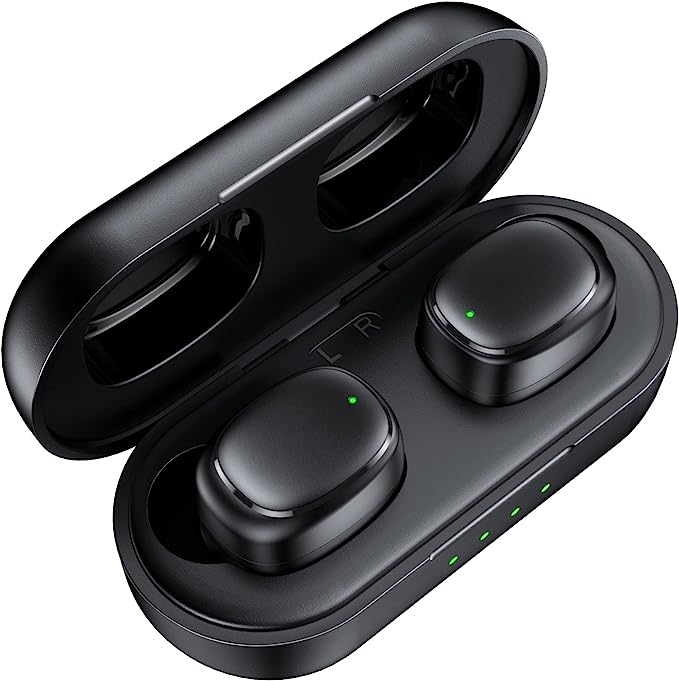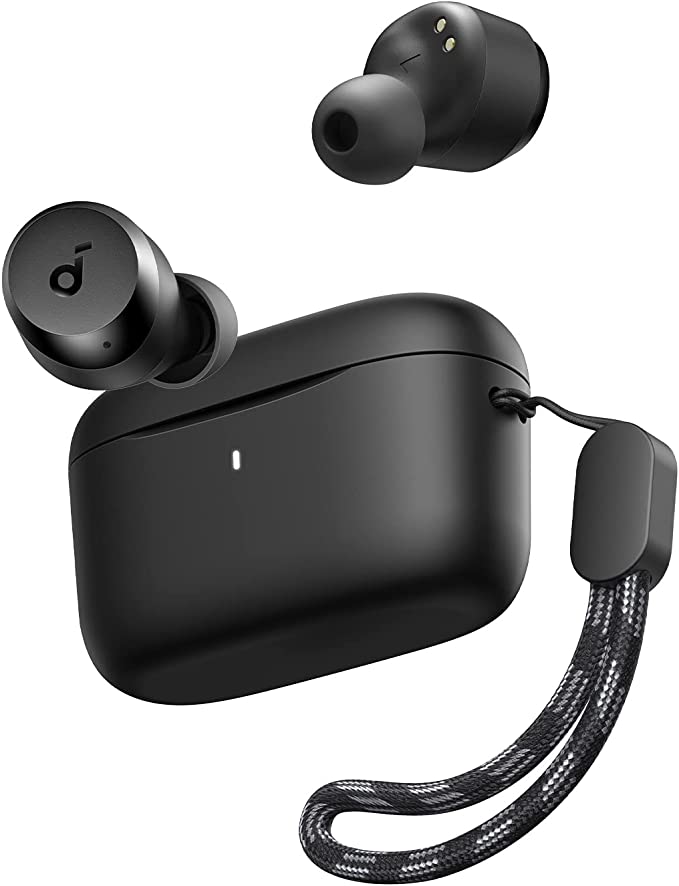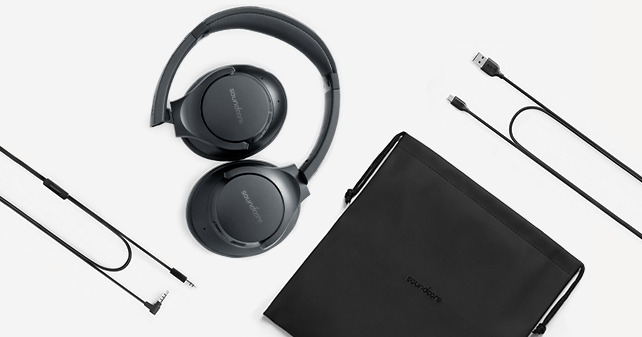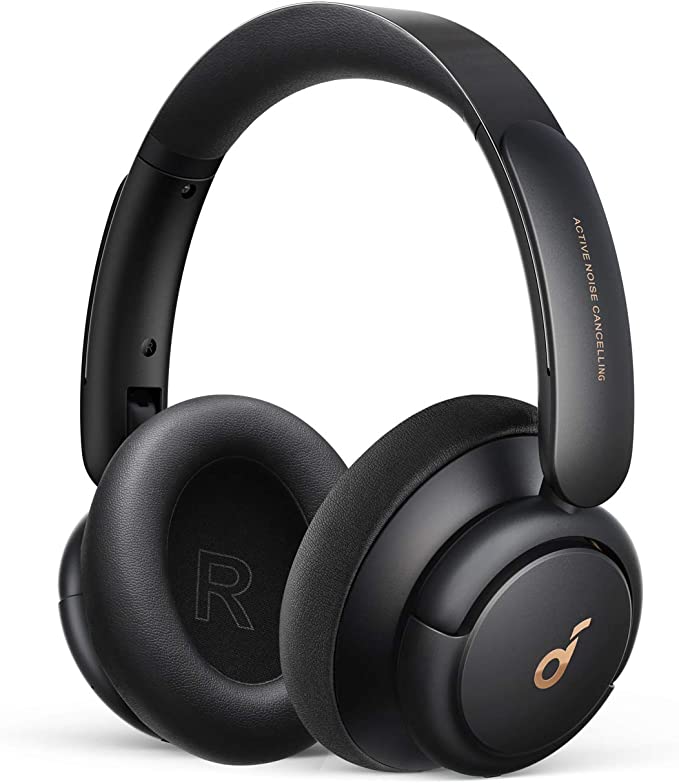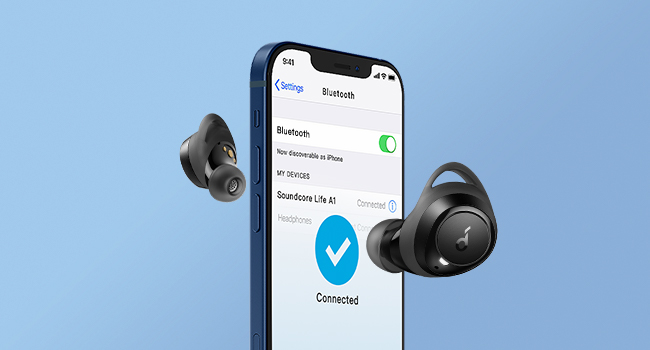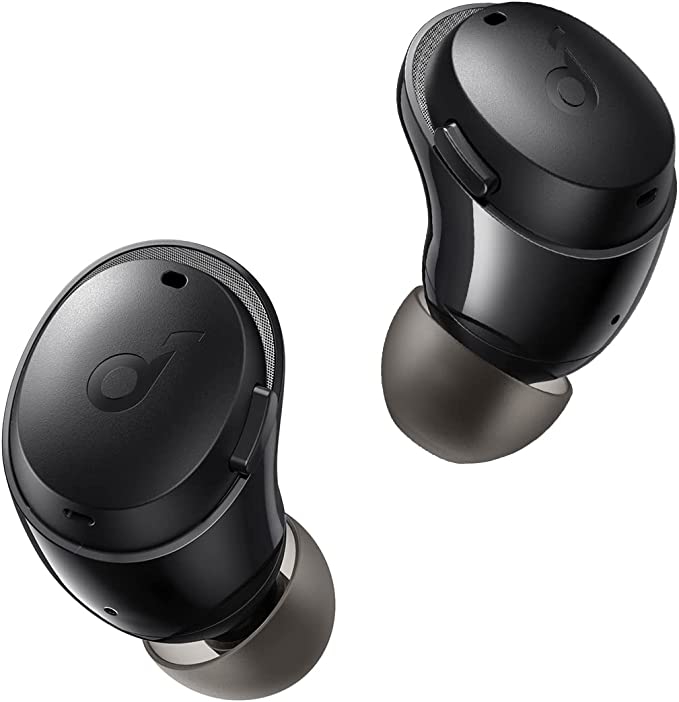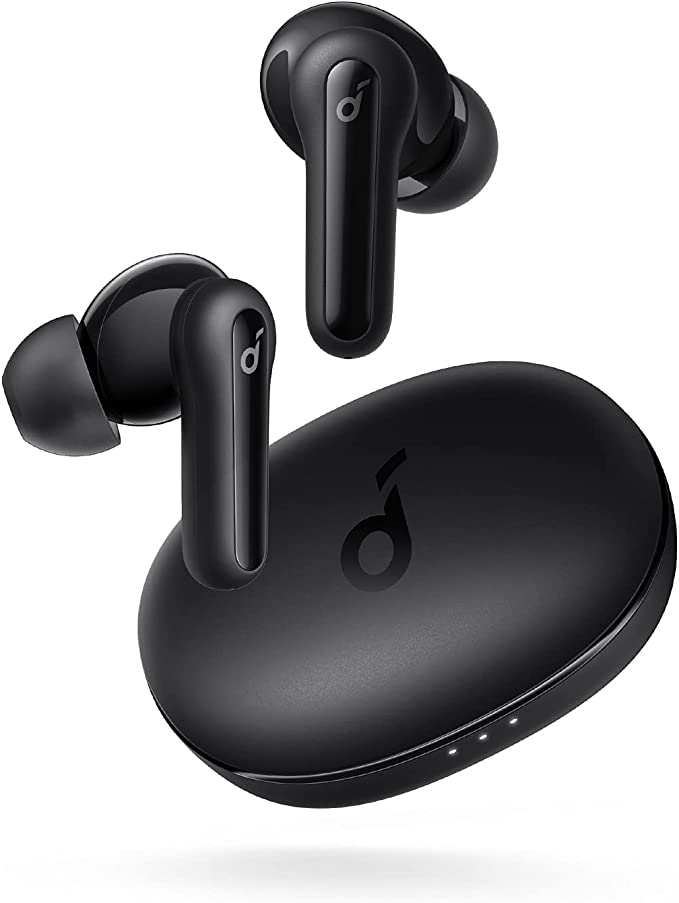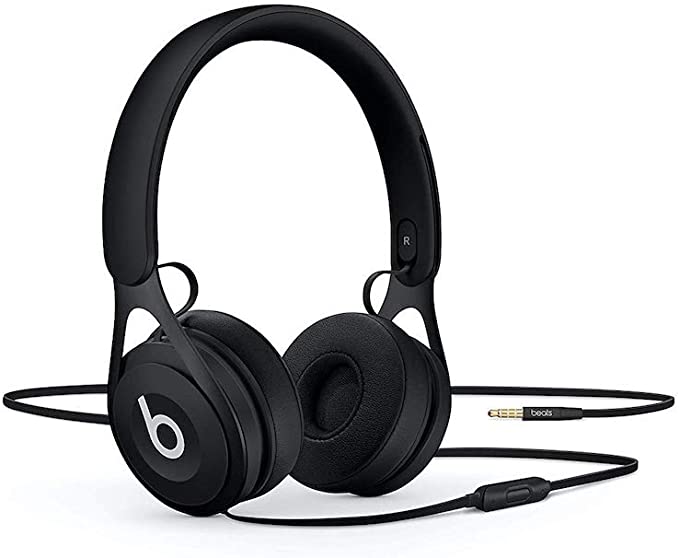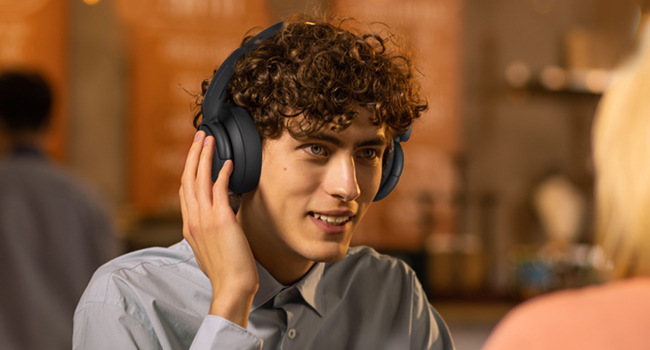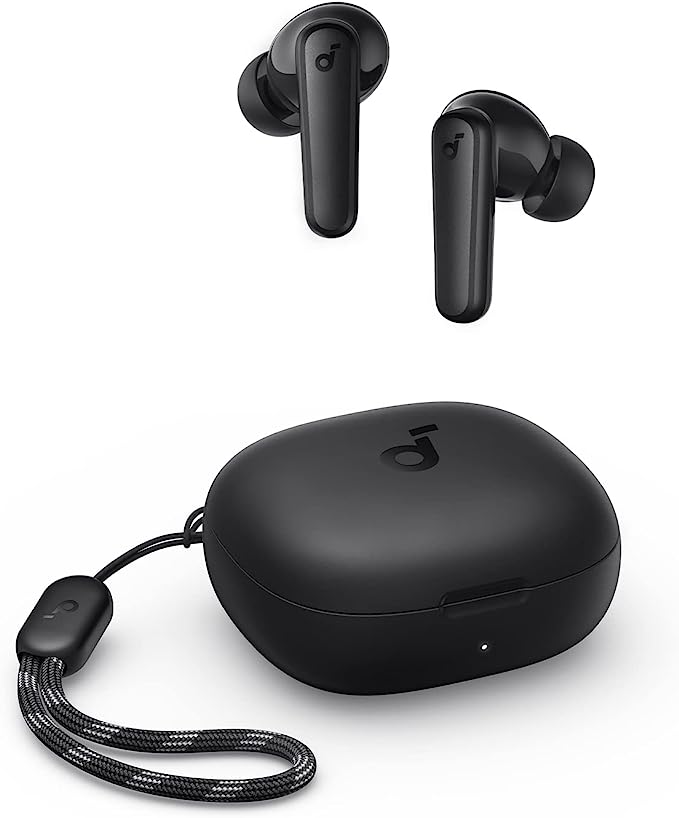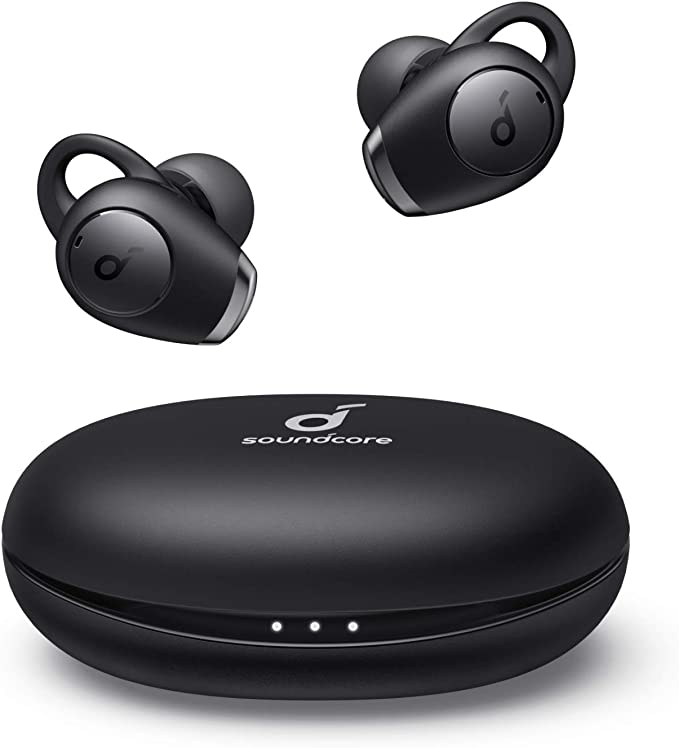Qaekie T19 Bone Conduction Headphones: Hear Your World, Safely
Update on May 30, 2025, 10:52 a.m.
In our perpetually connected world, sound is an invisible, yet omnipresent companion. We crave the immersive soundscape of our favorite music during a morning jog, the engaging narrative of a podcast on our commute, or the crucial instructions in a workout session. Yet, this desire for auditory engagement often comes at a cost: a disconnection from the immediate world around us. Traditional headphones, whether a snug in-ear bud or a plush over-ear can, can act as auditory blinkers, potentially compromising our safety or our ability to interact. What if there was a way to have your personal soundtrack فيلم (film) and hear the approaching bicycle bell, the colleague’s question, or the city’s subtle symphony? This is not a futuristic fantasy, but the intriguing reality offered by bone conduction technology, a fascinating innovation poised to redefine our relationship with personal audio. And as we delve into this realm, devices like the Qaekie T19 Bone Conduction Wireless Headphones emerge as tangible examples of this auditory evolution.

A Symphony Within the Skull: How Bone Conduction Lets You ‘Hear’
Before we unpack specific gadgets, let’s embark on a brief journey into how we perceive sound. The most familiar route is air conduction. Sound waves, a series of vibrations, travel through the air, funnel into our ear canal, and cause our eardrum to vibrate. These vibrations are then mechanically transferred through a delicate chain of tiny bones in the middle ear – the malleus, incus, and stapes (often charmingly referred to as the hammer, anvil, and stirrup) – to the cochlea. This spiral-shaped, fluid-filled chamber in the inner ear is the maestro of hearing, converting these mechanical vibrations into electrical signals that the auditory nerve transmits to the brain, which finally interprets them as the sounds we recognize.
Bone conduction, however, offers a fascinating detour on this auditory pathway. Imagine, for a moment, the composer Ludwig van Beethoven, battling profound deafness in his later years. Legend has it he discovered he could still perceive the notes of his piano by clenching a wooden rod between his teeth and resting the other end on the instrument. The vibrations from the piano traveled through the rod and his jawbone directly to his inner ear, bypassing the damaged conventional route. This, in essence, is the core principle of bone conduction. Instead of relying on air to carry sound to the eardrum, bone conduction headphones use small transducers that rest not in or over your ears, but typically on your cheekbones, just in front of the ears. These transducers convert electrical audio signals into micro-vibrations. These vibrations then travel through the bones of your skull – the zygomatic (cheek) and temporal bones primarily – directly to the cochlea. Your eardrum and middle ear are largely bypassed. It’s like having a private orchestra playing directly to your inner sanctum of hearing. This principle, once a lifeline for those with certain types of hearing loss (particularly conductive hearing loss, where the outer or middle ear fails to transmit sound effectively), has now elegantly pirouetted into the consumer electronics space, offering a unique listening experience for everyone. The Qaekie T19 headphones are designed to be a vessel for this very experience.

Deconstructing the Listening Experience: The Qaekie T19’s Tech Tapestry and User Echoes
Let’s peel back the layers of the Qaekie T19, examining its features not just as bullet points on a spec sheet, but as a confluence of scientific principles and real-world user experiences, drawing insights from its product descriptions and the valuable, albeit limited (3.4 out of 5 stars from 36 ratings on its Amazon listing), feedback from those who have walked, run, and lived with it.
The Freedom of ‘Open’: Re-engaging with the World’s Rhythm
Imagine cycling through a bustling park. With traditional earbuds, the honk of a distant car or a child’s sudden laughter might be entirely missed. The flagship feature of the Qaekie T19, and indeed all bone conduction headphones, is its Open-Ear Design. The earpieces do not obstruct your ear canals. This means that while you are immersed in your audio, your ears remain fully open and receptive to ambient sounds. For a city runner, this translates to hearing approaching traffic; for an office worker, it means being aware of a colleague’s query without constantly removing an earbud. The science behind this is rooted in our innate ability for auditory attention allocation and spatial hearing. Our brains are remarkably adept at processing multiple sound sources, allowing us to focus on one while maintaining a degree of awareness of others (think of the “cocktail party effect”). An open-ear design leverages this, enhancing safety and social connectivity. Users of such headphones often praise this newfound ability to stay connected to their surroundings. However, this openness is a double-edged sword. As some Qaekie T19 users have noted, in noisy environments like a factory, the desired audio can be overwhelmed by external sounds, making it “not loud enough” or less than ideal for nuanced content like audiobooks. This highlights a fundamental trade-off: ultimate situational awareness versus isolated audio fidelity in loud settings. The T19 product page mentions that it includes earplugs, a practical, if somewhat counterintuitive, accessory for moments when a user might want to temporarily reduce ambient noise, though this naturally negates the primary open-ear advantage.

Lightweight Resilience: The ‘Titanium’ Promise and Its Trials
Comfort during extended wear is paramount for any headphone. The Qaekie T19 boasts a weight of just 28 grams, a crucial factor in minimizing listener fatigue. The product description attributes its blend of lightness and stability to a “high-strength titanium memory alloy” frame that is “360° bendable without deformation.” Titanium alloys are indeed marvels of material science, prized in aerospace and medical implants for their exceptional strength-to-weight ratio, corrosion resistance, and biocompatibility (making them suitable for skin contact). The “memory” quality implies that the frame can be flexed and will return to its intended shape, theoretically offering a secure and adaptable fit for various head sizes. This aligns with reports from some users finding them “very stable and comfortable.”
However, the narrative of durability isn’t universally positive for the T19. Despite the robust-sounding titanium frame, several user reviews paint a picture of fragility, with some reporting units “falling apart after a couple weeks” or ear pads detaching due to “cheap adhesive.” This raises questions: Is the issue with the titanium alloy itself, or with the construction, the adhesives used, the quality of other non-metallic components, or perhaps the structural integrity of how these parts are joined? It’s a stark reminder that a single premium material in one component doesn’t guarantee overall product longevity, especially in consumer electronics where cost pressures often dictate compromises in assembly or secondary materials. This discrepancy underscores the importance of looking beyond a headline material specification to the holistic engineering and manufacturing quality.
The Wireless Weave: Bluetooth 5.3’s Connection Craft
Seamless connectivity is the lifeblood of wireless audio. The Qaekie T19 incorporates Bluetooth 5.3. In the ever-evolving landscape of Bluetooth standards, version 5.3 generally offers improvements such as enhanced connection stability (fewer dropouts), potentially faster transmission speeds, and better power efficiency compared to older versions. One of the highlighted conveniences for the T19 is “multi-point pairing,” allowing the headphones to connect to two Bluetooth devices simultaneously. Imagine listening to music from your laptop and then seamlessly taking a call from your paired smartphone without a fiddly re-pairing process. This is a practical boon for multitaskers. User feedback regarding the T19’s basic pairing process is generally positive, with one reviewer noting they were “easy to pair.”
The Enigma of Bone-Borne Sound: Quality and Quirks
This is where the science of bone conduction truly meets the subjective art of listening. The Qaekie T19 product description claims “HIFI sound quality.” However, “Hi-Fi” (High Fidelity) in the context of bone conduction needs careful interpretation. Bone conduction inherently transmits sound differently than air conduction. While it can deliver clear audio, especially for mid-range frequencies like human voices, it often faces challenges with reproducing the deep, resonant bass and the sparkling high trebles that audiophiles might expect from high-quality traditional headphones. This is due to the physics of how different frequencies vibrate through bone versus air. Some T19 users found the sound “really good” for music, while others, as mentioned, struggled with audiobooks or found the overall volume insufficient. Another common characteristic of bone conduction is “sound leakage” – at higher volumes, the vibrations can cause the external casing of the headphones to radiate sound into the air, meaning people nearby might get a faint whisper of what you’re listening to. The quality of the transducer and the acoustic design of the headphone housing play crucial roles in mitigating these inherent traits.

Powering Your Day’s Soundtrack: The Realities of Battery Life and Charging
The Qaekie T19 specifications list a 10-hour battery life from a single charge (also mentioned as “8-12 continuous hours”) and a standby time of up to 250 hours. It features a Type-C fast charging port, with a claimed full charge achieved in 1-2 hours. For users relying on their headphones throughout a workday or a long training session, these numbers are appealing. However, real-world battery performance can be a slippery metric, influenced by factors like listening volume, the stability of the Bluetooth connection, ambient temperature, and even the audio codec in use. Some T19 users reported a shorter effective playtime, with one noting it “didn’t even make it to 8hrs.” This discrepancy between stated and experienced battery life is a common theme across many portable electronics and serves as a reminder to view manufacturer claims as optimal-condition benchmarks.
Braving the Elements: The Shield of IPX6 Waterproofing
For an active user, resistance to sweat and the occasional rain shower is not a luxury but a necessity. The Qaekie T19 is certified IPX6 waterproof. The “IP” stands for Ingress Protection, and the “X6” signifies a specific level of defense against water. IPX6 means the headphones are protected against powerful water jets from any direction – think heavy sweat during an intense workout or getting caught in a downpour. This makes them well-suited for most sporting activities. However, it’s crucial to understand that IPX6 is not the same as being fully waterproof for submersion; these are not designed for swimming. The protection largely pertains to the external casing resisting water entry to the sensitive electronics within.
A Beacon in the Gloom: The Subtle Safety of a Running Light
A small but thoughtful feature mentioned for the Qaekie T19 is an integrated running light. For those who enjoy evening or early morning runs and cycles, this addition aims to enhance their visibility to others, such as motorists or other pedestrians, in low-light conditions. While not a replacement for dedicated high-visibility gear, it’s an incremental safety feature that aligns with the open-ear philosophy of maintaining awareness and safety.

Beyond a Single Device: The Wider World of Bone Conduction
The Qaekie T19, with its blend of features and mixed user reception, serves as an interesting case study in the current landscape of consumer bone conduction technology. It encapsulates both the exciting potential and the persistent challenges of this auditory approach.
The core advantages of bone conduction are compelling:
- Unparalleled Situational Awareness: This remains its most significant differentiator, crucial for outdoor activities and urban navigation.
- Comfort for Some: For individuals who find in-ear buds intrusive or over-ear headphones cumbersome, the on-cheekbone placement can offer a more comfortable experience, especially for prolonged use. It also allows the ear canal to “breathe,” potentially reducing issues for those prone to ear infections from occlusive earbuds.
- A Lifeline for Specific Hearing Impairments: For people with conductive hearing loss, bone conduction can be a truly transformative technology, enabling them to experience sound in a way that traditional hearing aids relying on air conduction cannot.
However, the technology is not without its inherent limitations:
- Audio Fidelity Trade-offs: As discussed, achieving the full spectrum конкурировать (konkurírovatʹ - to compete) with the richness and bass depth of high-end traditional headphones is an ongoing challenge. Sound leakage at higher volumes also remains a factor.
- Performance in Noise: The very openness that provides situational awareness means that in very loud environments, ambient noise can significantly interfere with the desired audio.
- The Sensation of Vibration: Some users, particularly those new to bone conduction, might find the sensation of vibration on their cheekbones unusual or even slightly ticklish, especially at higher volumes or with bass-heavy music. Most adapt, but it’s an initial experiential hurdle for some.
Bone conduction technology is best suited for:
- Outdoor Athletes: Runners, cyclists, hikers who need to remain acutely aware of their surroundings.
- Industrial Workers (in specific contexts): Where hearing protection might be mandated but communication or auditory cues are still necessary (sometimes used in conjunction with earplugs).
- Individuals with Conductive Hearing Loss.
- Anyone prioritizing environmental awareness over absolute audio isolation.
The field is continuously evolving. Researchers and engineers are tirelessly working on new transducer designs, improved materials, and sophisticated signal processing algorithms to enhance sound quality, minimize leakage, and refine the overall listening experience. We might see advancements in how vibrations are localized, more efficient power consumption, and even smarter integration with other wearable technologies.
Choosing Your Auditory Path: Technology in Service of Life
Ultimately, the Qaekie T19 and the broader category of bone conduction headphones invite us to think more consciously about how we consume audio. There is no single “perfect” headphone type; the ideal choice is deeply personal and context-dependent. Do you prioritize a sealed-off, immersive musical escape, or the ability to blend your personal soundtrack with the acoustic tapestry of the world around you?
Bone conduction technology, exemplified by devices like the Qaekie T19, offers a compelling alternative for those who choose the latter. It’s a testament to human ingenuity, repurposing a fundamental biological pathway to create a novel sensory experience. As this technology matures, it promises not just to change how we listen, but perhaps to foster a more present, aware, and safely engaged interaction with our richly sonorous world. The journey of sound is ever-unfolding, and bone conduction is undoubtedly composing some of its most interesting new movements.
